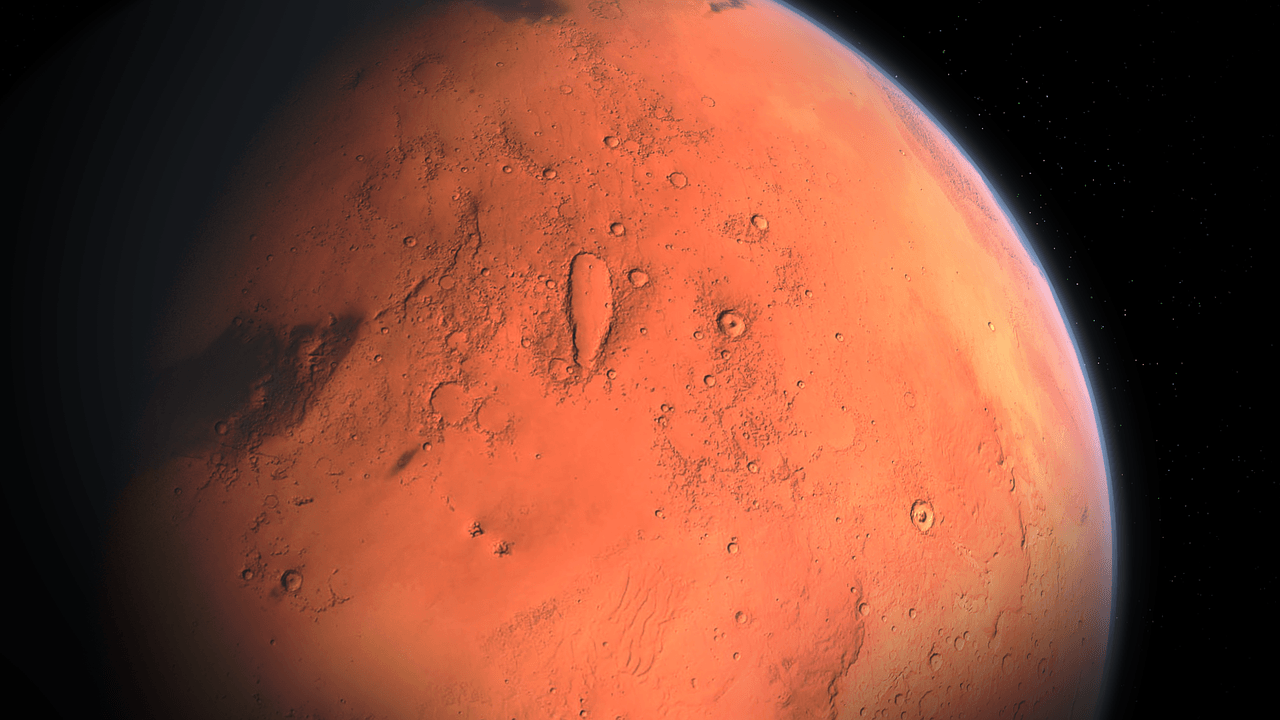New information suggests that the Mars oceans formed earlier than expected – perhaps as the result of a massive volcanic eruption.
Mars Oceans
The two large Mars oceans – Arabia and Deuteronius – formed billions of years ago, with the former coming into existence 4 billion years and the latter around 3.6 billion years ago. Both of these Mars oceans were located in the volcanic province Tharsis – an area of the planet we have yet to fully explore. New research suggests that this volcanic province may have provided the conditions necessary to create Mars oceans. This water is now gone, and may be trapped deep under the planet’s surface.
A new scenario proposed by a team of geophysicists at the University of California, Berkeley, suggests that the Mars oceans may have formed several hundred million years earlier than previously thought and that they might not actually have been as deep as we initially expected. The proposal is directly linked to the volcanic system in the Tharsis region, and posits that global warming allowed liquid water to exist billions of years ago in the Mars oceans.
According to Michael Manga, a UC Berkeley professor of Earth and planetary science and a senior author on the paper published in Nature this week, “Volcanoes may be important in creating the conditions for Mars to be wet.”
The Size Of The Oceans
There’s actually still some debate as to whether the Mars oceans actually existed, with naysayers pointing to the fact that the size of the oceans doesn’t correlate to estimates of the water potentially trapped underground and escaped into space.
This new model seeks to address those concerns, proposing that the Mars oceans formed around the same time as Tharsis – or even before – rather than after the large volcano formed. The smaller size of Tharsis meant that it didn’t distort the planet as much as it does today, meaning that the Mars oceans would be much shallower than initially expected – matching the amount of liquid we expect is buried underneath the surface and that we estimate escaped into space.
“The assumption was that Tharsis formed quickly and early, rather than gradually, and that the oceans came later,” Manga said. “We’re saying that the oceans predate and accompany the lava outpourings that made Tharsis.”
As far as the conditions necessary to supporting the Mars oceans goes, Manga suggest that Tharsis created Mars’ own global warming effect that heated the planet to the point that liquid water could exist. Volcanic eruptions may have also been responsible for creating channels that would allow underground water sources to reach the northern plains of the planet.
A Questionable Coastline
In addition to addressing the concerns of there not being enough water to support the claim of the existence of the Mars oceans, this new model from the team at UC Berkeley also gives a potential explanation for another argument against the existence of the oceans: the shorelines.
Those who question the existence of Mars oceans have also brought up the fact that the shorelines that would have surrounded the water are extremely irregular, with some areas differing by a kilometer or more – an occurrence that would make having a concentrated area of water like the Mars oceans seem infeasible.
Manga and his team suggests that this could be due to the fact that Arabia formed earlier than initially expected – already around during the first 20 percent of the Tharsis’ growth. The growth of this volcano would have depressed the land over time – deforming the land and giving us the irregular shoreline we see around the area we expect that the Mars oceans were located.
UC Berkeley graduate student and first author of the paper Robert Citron commented on the shorelines, saying, “These shorelines could have been replaced by a large body of liquid water that existed before and during the emplacement of Tharsis, instead of afterwards.”
Future Research
While we can’t easily confirm this hypothesis at this point in time, the next mission from NASA to Mars is expected to launch in May. Labeled the InSight mission (Interior Exploration using Seismic Investigations, Geodesy and Heat Transport), it should place a seismometer on the surface in order to prove the surface – perhaps giving us evidence of the frozen remains of the Mars oceans and giving us a better sense of what exactly happened billions of years ago to potentially form water on Mars.





